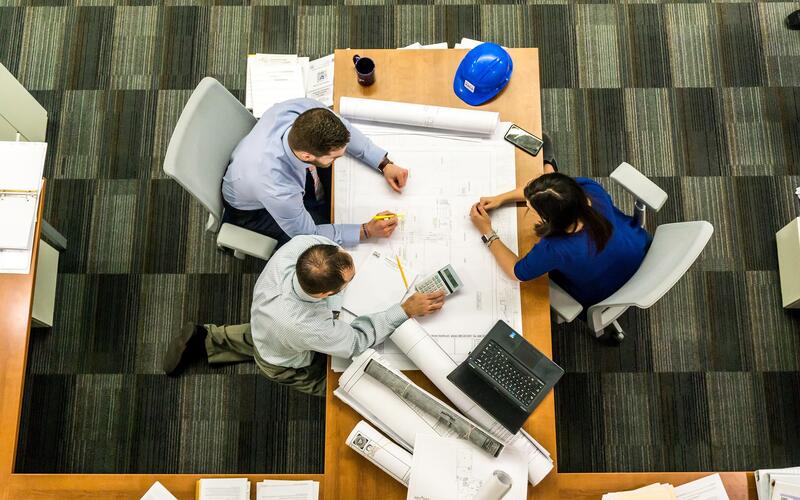Pioneering Decarbonization in Architectural and engineering activities and related technical consultancy: Strategies and Techniques
This article discusses strategies and techniques for decarbonizing architectural, engineering, and technical consultancy activities, paving the way for a more sustainable future.

Introduction
The architectural and engineering activities and related technical consultancy sector is one of the most significant contributors to global carbon emissions. The sector is responsible for designing and constructing buildings, infrastructure, and other physical structures that consume energy and emit greenhouse gases. Decarbonisation in this sector involves reducing carbon emissions and transitioning to a low-carbon economy. This article discusses the importance of decarbonisation in the architectural and engineering activities and related technical consultancy sector, the main sources of carbon emissions, strategies for reducing carbon emissions, challenges facing decarbonisation, and the implications of decarbonisation.
Importance of Decarbonisation in Architectural and Engineering Activities and Related Technical Consultancy Sector
The architectural and engineering activities and related technical consultancy sector is responsible for designing and constructing buildings, infrastructure, and other physical structures that consume energy and emit greenhouse gases. According to the International Energy Agency (IEA), the building sector is responsible for 36% of global final energy consumption and 39% of energy-related carbon dioxide (CO2) emissions. Therefore, decarbonisation in the architectural and engineering activities and related technical consultancy sector is crucial to achieving global climate goals.
Reducing carbon emissions in this sector can also have significant economic benefits. According to the World Green Building Council, the global green building market is expected to reach $364 billion by 2022. The sector can create new jobs and stimulate economic growth by investing in energy-efficient buildings and infrastructure.
Main Sources of Carbon Emissions in Architectural and Engineering Activities and Related Technical Consultancy Sector
The main sources of carbon emissions in the architectural and engineering activities and related technical consultancy sector include:
- Building energy consumption: Buildings consume a significant amount of energy for heating, cooling, lighting, and ventilation. The energy consumption of buildings is responsible for a significant portion of carbon emissions in this sector.
- Embodied carbon: Embodied carbon refers to the carbon emissions associated with the production, transportation, and construction of building materials. The production of cement, steel, and other building materials emits a significant amount of carbon.
- Transportation: The transportation of people and materials to and from construction sites and buildings also contributes to carbon emissions.
- Waste: The disposal of construction waste and demolition debris also contributes to carbon emissions.
Strategies for Reducing Carbon Emissions in Architectural and Engineering Activities and Related Technical Consultancy Sector
Reducing carbon emissions in the architectural and engineering activities and related technical consultancy sector requires a combination of strategies, including:
- Energy-efficient buildings: Designing and constructing energy-efficient buildings can significantly reduce energy consumption and carbon emissions. Energy-efficient buildings can be achieved through the use of passive design strategies, such as orientation, shading, and natural ventilation, and the use of energy-efficient technologies, such as LED lighting, high-efficiency HVAC systems, and insulation.
- Low-carbon materials: The use of low-carbon materials, such as recycled materials, timber, and low-carbon concrete, can significantly reduce embodied carbon emissions.
- Sustainable transportation: Reducing the carbon emissions associated with transportation can be achieved through the use of public transportation, cycling, and electric vehicles.
- Waste reduction: Reducing waste through recycling and reusing materials can significantly reduce carbon emissions.
Challenges Facing Decarbonisation in Architectural and Engineering Activities and Related Technical Consultancy Sector
Decarbonisation in the architectural and engineering activities and related technical consultancy sector faces several challenges, including:
- Lack of awareness: Many architects, engineers, and other professionals in the sector may not be aware of the importance of decarbonisation or the strategies for reducing carbon emissions.
- Cost: Implementing energy-efficient technologies and low-carbon materials can be more expensive than traditional methods, which can be a barrier to adoption.
- Regulations: Regulations and building codes may not require or incentivize the use of energy-efficient technologies and low-carbon materials, which can hinder decarbonisation efforts.
- Technical challenges: The implementation of energy-efficient technologies and low-carbon materials may require specialized knowledge and skills, which can be a challenge for professionals in the sector.
Implications of Decarbonisation for Architectural and Engineering Activities and Related Technical Consultancy Sector
Decarbonisation in the architectural and engineering activities and related technical consultancy sector has several implications, including:
- New opportunities: Decarbonisation can create new opportunities for architects, engineers, and other professionals in the sector, such as designing and constructing energy-efficient buildings and infrastructure.
- Economic benefits: Decarbonisation can stimulate economic growth and create new jobs in the sector.
- Improved public health: Energy-efficient buildings can improve indoor air quality and reduce the risk of respiratory illnesses.
- Reduced environmental impact: Decarbonisation can significantly reduce the environmental impact of the sector, including carbon emissions, waste, and resource depletion.
Conclusion
Decarbonisation in the architectural and engineering activities and related technical consultancy sector is crucial to achieving global climate goals and creating a sustainable future. The sector is responsible for a significant portion of global carbon emissions, and reducing these emissions requires a combination of strategies, including energy-efficient buildings, low-carbon materials, sustainable transportation, and waste reduction. Decarbonisation faces several challenges, including lack of awareness, cost, regulations, and technical challenges. However, decarbonisation also presents new opportunities, economic benefits, improved public health, and reduced environmental impact.